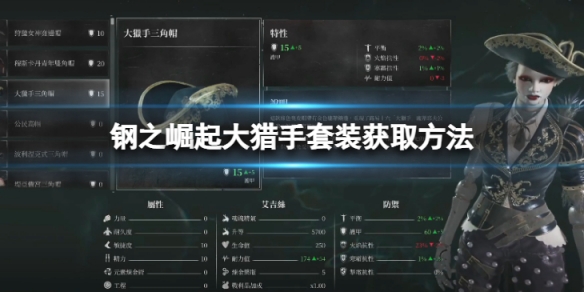即时看!Croping System Report
2023-04-24 08:31:24来源:哔哩哔哩
Field 1:
 (资料图片)
(资料图片)
This field is located on the east side of county road 900 W in Westport, Indiana. The nearest town is Letts, which is 3 miles east.
The legal land description for this field is W ½ NW ¼ S16 T9N R8E
Maps for field one:
Comparison to Letts:
Map of field:
This field has been in my boss’s name for many years, and is usually chopped into silage, as it is located next to the feed bunkers, and close to the main farm. This field has been in the family for generations, and is a corn and soybean rotation with chicken manure applied regularly, always producing a steady crop. The two main soils are Cyclone silt loam and a Fincastle silt loam making up well over 80% of the land area. The runoff in the area is negligible for both soil types because of the field's flat nature with slopes around 0 to 2 degrees. The drainage class of the soil is poorly drained. With that there is some ponding however, waterways in place to help with this.
Field 2:
This field is also located on the east side of county road 900 West in Westport, Indiana. The nearest town is Letts, which is 3 miles east.
The legal land description for this field is SW ¼ SW ¼ S16 T9N R8E
Maps for field 2:
Comparison to Letts:
Map of field:
This field is just south of Field #1 and has also been in my boss’s name for a while. This field sees a crop rotation every year, and also is regularly applied with either chicken manure or the local dairy manure. This field is on a corn and soybean rotation and continuously produces a solid stand everywhere. Just like our previous field the two main soils are cyclone silt loam and Fincastle silt loam. The drainage class for this area is poorly drained. This area also has had issues with ponding and there are waterways to help out with this issue
5. (For field 1 and 2)
These fields are located near Lowes Grain which is 10 miles north in Greensburg, Indiana. Also the crop is often shipped to Poet Grain, and down to the river at Consolidated Grain. The climate is very steady, and tends to usually have the right amount of rain and sunshine to successfully grow rotational crops. This area is very flat, and has seen plentiful harvests.
(Part 2)
These fields are both located within ¼ mile of each other on 900 West just outside of Ltts, Indiana. We are going to go with a corn soybean rotation. Some things we have considered for this choice are past crop rotations and how those yielded. By using the rotational system we are able to create healthier soil, and produce much more proficient yields.
In the first field we have decided to plant corn in this field. Beans were present in this field last year, and by using rotational crops it will allow for much more potential in our yields and farming practices. This field often sees chicken manure yearly, and will often see tillage in the spring, as well as some fall plowing if needed.
In the second field, we have chosen to plant soybeans. As there was corn planted last year we decided upon soybeans to maintain soil health. This field will see dairy manure at about 18,000 gallons/acre. This field tends to produce very good yields, and my projection will be 75-85 bushel beans.
In the first field, the planter will be set at thirty inch rows with the population sitting right at 32,000 per acre. In the second field (soybeans) our bean planter will be set at 15 inch inch rows with the population right around 125,000 per acre.
Both of these fields have great yield potential with manure application, rotational crops to increase yield, and good farming practice.
Field 1
For our first field I have chosen a hybrid from Beck’s hybrids. The specific hybrid I have chosen is the 5909Q. The 5909Q variety has Qroam genetics that help protect against corn rootworm mainly and other insects. This hybrid takes 109 days to maturity which fits our season. This hybrid also has a very good response to Nitrogen and Herbicide with both being a 9 of 9 on the rating. My second choice would be a sister hybrid 5909ZZ which has no treatments and may be a good variety due to the high response rate to nitrogen and herbicides. Another main reason
This field has 80 acres in it which means at 32,000 plants per acre we will need about 2.5 bags per acre and in total we would need 200 bags for the field.
(Part 2) CSR Evan Wullenweber, Connor Klink, Fenfei Qiu
These fields are both located within ¼ mile of each other on 900 West just outside of Ltts, Indiana. We are going to go with a corn soybean rotation. Some things we have considered for this choice are past crop rotations and how those yielded. By using the rotational system we are able to create healthier soil, and produce much more proficient yields.
In the first field we have decided to plant corn in this field. Beans were present in this field last year, and by using rotational crops it will allow for much more potential in our yields and farming practices. This field often sees chicken manure yearly, and will often see tillage in the spring, as well as some fall plowing if needed.
In the second field, we have chosen to plant soybeans. As there was corn planted last year we decided upon soybeans to maintain soil health. This field will see dairy manure at about 18,000 gallons/acre. This field tends to produce very good yields, and my projection will be 75-85 bushel beans.
In the first field, the planter will be set at thirty inch rows with the population sitting right at 32,000 per acre. In the second field (soybeans) our bean planter will be set at 15 inch inch rows with the population right around 125,000 per acre. Both of these fields have great yield potential with manure application, rotational crops to increase yield, and good farming practice.
Field 1
For our first field I have chosen a hybrid from Beck’s hybrids. The specific hybrid I have chosen is the 5909Q. The 5909Q variety has Qroam genetics that help protect against corn rootworm mainly and other insects. This hybrid takes 109 days to maturity which fits our season. This hybrid also has a very good response to Nitrogen and Herbicide with both being a 9 of 9 on the rating. My second choice would be a sister hybrid 5909ZZ which has no treatments and may be a good variety due to the high response rate to nitrogen and herbicides. Another one of the main reasons we chose this hybrid over other is the fact that it can adapt to a lot of soil conditions. Overall a very flexible hybrid compared to others.
This field has 80 acres in it which means at 32,000 per acre in which we will need about 2.5 bags per acre and in total we would need 200 bags for the field.
Field 2
In our second field we have an AsGrow AG35XF1. This Soybean is a great option for this field because of its adaptability in wetter soils which happens to be what we have. It takes 50 days to make it to maturity making it a good choice over others alongside our corn to allow our side dressing to take place. This variety is also a roundup ready soybean. There is a 5 rating on this variety for frog eye leaf spot which is above average on this chart. Frog eye leaf spot is a prominent problem in southern indiana.
I will be planting at a population of 160,000 which puts me at about 1.15 bags per acre and a total 46 bags for the 40 acre field.
My back up hybrid is an AsGrow AG33XF3 this is a similar hybrid to the main. This hybrid has a higher tolerance to sudden death syndrome and southern stem canker.
标签:
相关阅读
-

csgo回放看不了应该怎么办?有哪些可以免费白嫖的CSGO开箱网站?
csgo有哪些免费开箱网站?很多喜欢玩csgo的玩家都有这样的疑问,毕竟csgo的饰品价值千金,很难不让人心动...
2023-06-26
- 《皇家骑士团重生》飞行戒指装备怎么获得?《皇家骑士团重生》飞行戒指获取流程攻略
- 《大江湖苍龙与白鸟》黑风寨都有哪些武功秘籍?《大江湖苍龙与白鸟》黑风寨全武功秘籍攻略
- 《大江湖苍龙与白鸟》青城后山如何通关?《大江湖苍龙与白鸟》青城后山隐藏地图攻略
- 《魔兽世界》10.0挖宝奇兵什么效果?《魔兽世界》10.0挖宝奇兵道具任务流程攻略
- 《宝可梦朱紫》吸取之吻招式学习器在什么地方?《宝可梦朱紫》吸取之吻招式学习器位置坐标说明
- 《鹅鸭杀》承办丧葬者游戏怎么玩?《鹅鸭杀》承办丧葬者角色玩法攻略
- 《宝可梦朱紫》闪光菜谱配方是什么?《宝可梦朱紫》闪光菜谱制作配方分享
- 《缺氧》热火朝天更新什么内容?《缺氧》热火朝天更新内容介绍
- 《索尼克:未知边境》开发团队畅谈神秘女孩角色设计 力争传承系列游戏辨识度
- 《战地1》Steam低价促销 超低价格仅需23.76元































 营业执照公示信息
营业执照公示信息